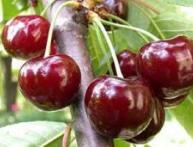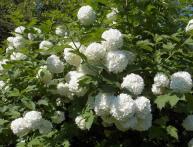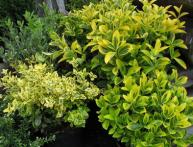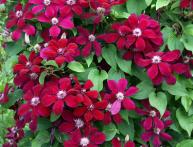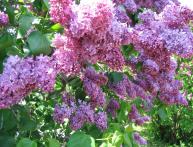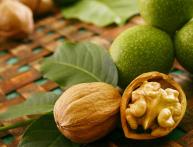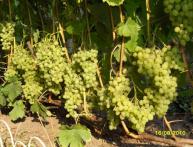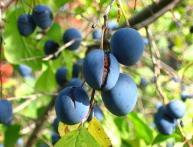Viburnum bush, reproduction and care

Viburnum is a wonderful shrub of the honeysuckle family. Today there are about 200 varieties of viburnum, including decorative viburnum.
The most popular and widespread variety in the middle zone is common viburnum. The viburnum bush reaches a height of 3-4 m, with a beautiful spreading crown. Viburnum leaves are large, lobed, light green in spring and red in autumn. The flowers are collected in inflorescences with a diameter of 6-12 cm.
Viburnum produces its first harvest in the fifth or sixth year of life, blooming in mid-May. The fruits of viburnum are bright red, spherical, very juicy berries up to 1 cm in diameter.
The viburnum bush is unpretentious, shade-tolerant, grows well in almost any soil, tolerates pruning without stress, but loves moisture.
Viburnum is propagated by seeds, layering and cuttings. For cuttings, choose non-lignified, green, elastic branches. From the branches, select the middle part 7-12 cm long with three nodes. The leaves on the cuttings are removed from the lower part and cut at an angle.
The cuttings are planted in a prepared substrate (1 part sand, 1 part peat) at an angle, at a distance of 4-5 cm from each other. The cuttings are covered with polyethylene and watered frequently, but moderately. With proper care, the first roots should appear in 3-4 weeks, at the same time the film is removed from the plants.
Rooted cuttings overwinter at the rooting site under a layer of dry leaves or spruce branches, after which in the spring they can be planted in a permanent place.
To prevent diseases and the appearance of parasites in the spring, as soon as the snow melts, viburnum must be treated with special chemicals.
Caring for viburnum bushes is easy. This includes periodic mineral fertilizing, removal of dead and damaged branches, and watering during dry periods.

